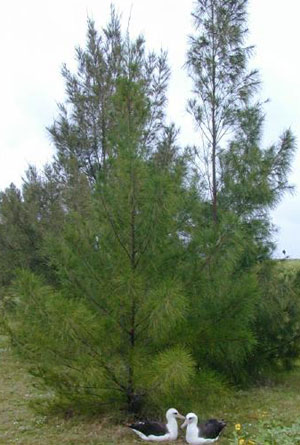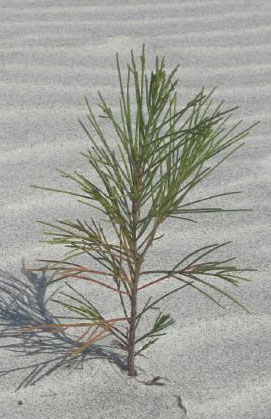PCA Alien Plant Working Group (original) (raw)

- Photographic List
- Complete List
- Annual bastard-cabbage
- Amur corktree
- Asiatic colubrina
- Asiatic sand sedge
- Australian pine
- Black locust
- Black swallow-wort
- Burma reed
- Bush honeysuckles (exotic)
- Canada thistle
- Carrotwood
- Chinaberry
- Chinese lespedeza
- Chinese wisteria
- Climbing euonymus
- Cogon grass
- Common buckthorn
- Common mullein
- Common reed
- English ivy
- Eurasian watermilfoil
- Fig buttercup
- Fire tree
- Fiveleaf akebia
- Fountain grass
- Garlic mustard
- Goutweed
- Giant reed
- Japanese barberry
- Japanese hop
- Japanese honeysuckle
- Japanese knotweed
- Japanese spiraea
- Japanese stiltgrass
- Japanese wisteria
- Kudzu
- Leafy spurge
- Melaleuca
- Mile-a-minute
- Multiflora rose
- Musk thistle
- Oriental bittersweet
- Pale swallow-wort
- Paper mulberry
- Perennial pepperweed
- Porcelainberry
- Princess tree
- Purple loosestrife
- Russian-olive
- Salt cedar
- Siberian elm
- Silk tree
- Smooth cordgrass
- Spotted knapweed
- Strawberry guava
- Tall fescue
- Tree-of-heaven
- Velvet tree
- West Indian marsh grass
- White poplar
- Wineberry
- Yellow Himalayan raspberry
- Yellow starthistle
- Aquatics
- Herbaceous Plants
- Annual bastard-cabbage
- Asiatic sand sedge
- Burma reed
- Canada thistle
- Cogon grass
- Chinese lespedeza
- Common mullein
- Common reed
- Eurasian watermilfoil
- Fig buttercup
- Fountain grass
- Garlic mustard
- Goutweed
- Giant reed
- Japanese knotweed
- Japanese stiltgrass
- Leafy spurge
- Musk thistle
- Perennial pepperweed
- Purple loosestrife
- Smooth cordgrass
- Spotted knapweed
- Tall fescue
- West Indian marsh grass
- Yellow starthistle
- Shrubs
- Trees
- Vines
 NATIVE RANGE
Malaysia, southern Asia, Oceania and Australia
NATIVE RANGE
Malaysia, southern Asia, Oceania and Australia
DESCRIPTION Australian pine is a deciduous tree with a soft, wispy, pine-like appearance that can grow to 100 feet or more in height. Also known as ironwood, beefwood, she oak and horsetail tree, it bears a superficial resemblance to the conifer genus Pinus because of its small, round, cone-like fruits and its branchlets of scale-like leaves that look like pine needles. Its flowers are tiny, brown and wind-pollinated. The fruit is a nutlet about ½ inch in diameter that contains winged seeds.
ECOLOGICAL THREAT Australian pine is fast-growing (5-10 feet per year), produces dense shade and a thick blanket of leaves and hard, pointed fruits, that completely covers the ground beneath it. Dense thickets of Australian pine displace native dune and beach vegetation, including mangroves and many other resident, beach-adapted species. Because its roots are capable of producing nitrogen through microbial associations, Australian pine can colonize nutrient-poor soils. Once established, it radically alters the light, temperature, and soil chemistry regimes of beach habitats, as it outcompetes and displaces native plant species and destroys habitat for native insects and other wildlife. Chemicals in the leaves of Australian pine may inhibit the growth of other plants underneath it.
The ground below Australian pine trees becomes ecologically sterile and lacking in food value for native wildlife. Unlike native shrubbery, the thick, shallow roots of Australian pine make it much more susceptible to blow-over during high wind events, leading to increased beach and dune erosion and interference with the nesting activities of sea turtles.
 DISTRIBUTION IN THE UNITED STATES
Australian pine is established in the Hawaiian islands, coastal Florida, Puerto Rico, the Bahamas, and many Caribbean islands.
DISTRIBUTION IN THE UNITED STATES
Australian pine is established in the Hawaiian islands, coastal Florida, Puerto Rico, the Bahamas, and many Caribbean islands.
HABITAT IN THE UNITED STATES Australian pine occurs in open, coastal strand habitat, characterized by sand and shell beaches, rocky coasts, sand dunes, and sand bars in subtropical climates.
 BIOLOGY & SPREAD
Australian pine is capable of flowering year- round and can produce tremendous numbers of small, winged seeds which are dispersed by wind.
BIOLOGY & SPREAD
Australian pine is capable of flowering year- round and can produce tremendous numbers of small, winged seeds which are dispersed by wind.
BACKGROUND Australian pine was introduced to Florida in the late 1800's and planted widely for the purposes of ditch and canal stabilization, shade and lumber.
MANAGEMENT OPTIONS No biological controls are currently available for management of Australian pine. For new or small infestations, manual removal of Australian pine seedlings and saplings is recommended. For heavier infestations, application of a systemic type herbicide to bark, cut stumps, or foliage is likely to be the most effective management tool. Prescribed fire has also been used for large infestations in fire-tolerant communities.
Raking and removal of leaf litter, cones and seeds should be done whenever possible. Impacts to native plants should be minimized during any control activities. Whenever possible, efforts should be taken to prevent the introduction or encroachment of Australian pine. For example, recently disturbed beach habitat may be planted with native vegetation to prevent Australian pine from invading.
USE PESTICIDES WISELY: ALWAYS READ THE ENTIRE PESTICIDE LABEL CAREFULLY, FOLLOW ALL MIXING AND APPLICATION INSTRUCTIONS AND WEAR ALL RECOMMENDED PERSONAL PROTECTIVE GEAR AND CLOTHING. CONTACT YOUR STATE DEPARTMENT OF AGRICULTURE FOR ANY ADDITIONAL PESTICIDE USE REQUIREMENTS, RESTRICTIONS OR RECOMMENDATIONS.
NOTICE: MENTION OF PESTICIDE PRODUCTS ON THIS WEB SITE DOES NOT CONSTITUTE ENDORSEMENT OF ANY MATERIAL.
CONTACTS For more information on the management of Australian Pine, please contact:
- Ken Langeland, University of Florida, Institute of Food and Agriculture Services**,** kal at gnv.ifas.ufl.edu
SUGGESTED ALTERNATIVE PLANTS Locally native plants that are adapted to the harsh conditions of the coastal environment should be used for landscape planting and beach restoration projects. Because most of these shrub species are evergreen, they provide year-round shade, erosion control and essential food and shelter for native wildlife. A few examples of Atlantic and Caribbean natives include sea grape (Coccoloba uvifera), sea ox-eye daisy (Borrichia frutescens), sea hibiscus (Hibiscus tiliaceus), sea lavender (Tournefortia gnaphalodes) and sea-blight (Suaeda maritima).
OTHER LINKS
AUTHOR Jil M. Swearingen, National Park Service, Washington, DC
PHOTOGRAPH Forest & Kim Starr, US Geological Survey, HI
REFERENCES Florida Exotic Pest Plant Council. 1991. Exotic Woody Plant Control. In Florida Cooperative Extension Service, University of Florida, Ken Langeland, ed. pp 8-9.
Jubinsky, Greg A. and Andrew Leslie. 199?. "Casuarina." Bureau of Aquatic Plant Management, Technical Services Section, Tallahassee, Florida.
Nellis, David W. 1994. Seashore plants of South Florida and the Caribbean: a guide to identification and propagation of xeriscape plants. Pineapple Press, Inc., Sarasota, Florida.
Randall, J.M. and J. Marinelli. 1996. Invasive Plants: Weeds of the Global Garden. Brooklyn Botanic Garden Club Inc., Handbook No. 149. Brooklyn, New York. p. 30.
Swearingen, J. 2009. WeedUS Database of Plants Invading Natural Areas in the United States: Australian Pine (Casuarina equisetifolia). http://www.invasive.org/weedus/subject.html?sub=3268.
The Nature Conservancy. Australian Pine: Element Stewardship Abstract. In: Wildland Weeds Management & Research Program, Weeds on the Web.
USDA, NRCS. 2009. The PLANTS Database (http://plants.usda.gov). National Plant Data Center, Baton Rouge, LA 70874-4490 USA.
Plant Conservation Alliance, Alien Plant Working Group.